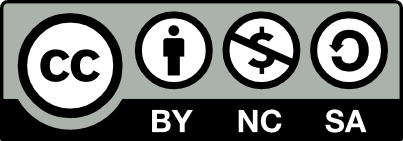/
Dogodki
/
Konference
The children's recovery center on Lokrum


To delo avtorjev Sandra Jović Mazalin, Marta Penava je ponujeno pod Creative Commons Priznanje avtorstva-Nekomercialno-Deljenje pod enakimi pogoji 4.0 Mednarodna
Datoteke (1)
Opis
The paper examines the operation of the children's recovery center on the island of Lokrum in the period from 1921 to 1955. The work is based on the results of studying archival materials, articles from newspapers of that time, and available scientific and professional literature. The island of Lokrum, located near Dubrovnik, was chosen as a very favorable location for the recovery of children and youth with various developmental difficulties, especially children from poor families who suffered from various ailments due to poor nutrition. The recovery center began operating in 1921 and in the first few years mainly cared for boys. Over time, the capacity of the recovery center increased, and in addition to boys, girls were also cared for. In addition to treating children, care was also taken for their education, and they were required to attend school. Children and staff were accommodated in the premises of the Benedictine monastery, Maximilian's castle, and in barracks. The number of children varied over the years, with the highest number being over 2000 in 1942. Children from all parts of the then Yugoslavia stayed in the recovery center. They mostly came on the recommendation of doctors and at state expense, especially those from poor families. Financial problems accompanied the operation of the hospital, and the most difficult times were during the war years, when due to shortages of food, water and poor hygiene conditions, there were cases of infectious diseases with several fatal outcomes. All available arable land on the island was used for food production. During World War II, the recovery center had a dual function, besides sick children, it also housed refugee children and war orphans. This remained the case until 1955 when the recovery center and orphanage were closed due to severe financial difficulties.
Metapodatki (12)
- identifikatorhttps://hdl.handle.net/11686/71079
- naslov
- The children's recovery center on Lokrum
- avtor
- Sandra Jović Mazalin
- Marta Penava
- soavtor
- Darja Zaviršek (mod.)
- predmet
- otroci
- zavodi
- Lokrum
- opis
- The paper examines the operation of the children's recovery center on the island of Lokrum in the period from 1921 to 1955. The work is based on the results of studying archival materials, articles from newspapers of that time, and available scientific and professional literature. The island of Lokrum, located near Dubrovnik, was chosen as a very favorable location for the recovery of children and youth with various developmental difficulties, especially children from poor families who suffered from various ailments due to poor nutrition. The recovery center began operating in 1921 and in the first few years mainly cared for boys. Over time, the capacity of the recovery center increased, and in addition to boys, girls were also cared for. In addition to treating children, care was also taken for their education, and they were required to attend school. Children and staff were accommodated in the premises of the Benedictine monastery, Maximilian's castle, and in barracks. The number of children varied over the years, with the highest number being over 2000 in 1942. Children from all parts of the then Yugoslavia stayed in the recovery center. They mostly came on the recommendation of doctors and at state expense, especially those from poor families. Financial problems accompanied the operation of the hospital, and the most difficult times were during the war years, when due to shortages of food, water and poor hygiene conditions, there were cases of infectious diseases with several fatal outcomes. All available arable land on the island was used for food production. During World War II, the recovery center had a dual function, besides sick children, it also housed refugee children and war orphans. This remained the case until 1955 when the recovery center and orphanage were closed due to severe financial difficulties.
- založnik
- Inštitut za novejšo zgodovino
- datum
- 10. 2024
- tip
- video
- jezik
- Angleščina
- jeDelOd
- pravice
- licenca: ccByNcSa
